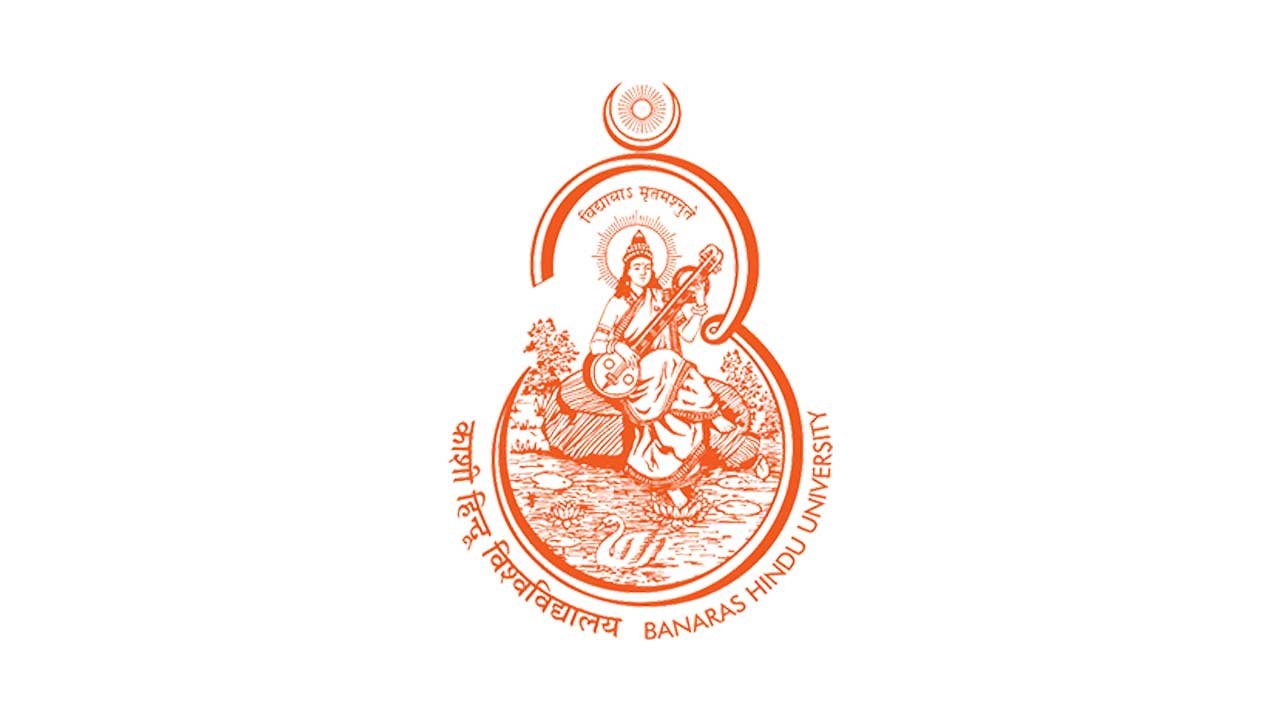Banaras Hindu University (BHU), established in 1916 by Pandit Madan Mohan Malaviya, is one of India’s most prestigious and historic central universities, known for blending traditional Indian values with modern education.
Spanning Asia’s largest residential campus, BHU offers world-class infrastructure, including the iconic Vishwanath Temple, Bharat Kala Bhavan museum, and Sir Sunderlal Hospital. With over 140 departments across diverse disciplines, it excels in academics, research, and innovation.
Designated an “Institution of Eminence,” BHU boasts a legacy of illustrious alumni like Dr. S. Radhakrishnan and Narayan Murthy, reflecting its enduring national and global impact.
| Attribute | Details |
|---|---|
| Full Name | Banaras Hindu University (BHU) |
| Founded | 1916 |
| Founder | Pandit Madan Mohan Malaviya |
| Location | Varanasi (Kashi), Uttar Pradesh, India |
| Campus Size | Main Campus: 1,370 acres; RGSC Campus: 2,760 acres |
| Type | Central University |
| Recognition | Institution of Eminence (Government of India) |
| Academic Structure | 4 Institutes, 16 Faculties, 140+ Departments, 4 Interdisciplinary Schools |
| Major Institutes | Institute of Science, IMS-BHU, IAgSc, Institute of Management Studies |
| Key Landmarks | Vishwanath Temple, Bharat Kala Bhavan, Central Library, Sir Sunderlal Hospital |
| Notable Alumni | Dr. S. Radhakrishnan, Harivansh Rai Bachchan, Narayan Murthy, C.N.R. Rao |
| Global Rankings | Ranked by NIRF, QS World University Rankings, Times Higher Education (THE) |
| Official Website | www.bhu.ac.in |
Banaras Hindu University: A Citadel of Knowledge and National Pride | AUBSP
Banaras Hindu University (BHU) is not just a higher education institution; it is an epicenter of cultural heritage, academic brilliance, and national revival. Established in 1916, it stands as one of India’s premier central universities.
From its inspiring founding vision to its massive residential campus, global alumni network, and cutting-edge research, BHU exemplifies the soul of India’s educational renaissance. In this article, AUBSP takes you through the enduring legacy and dynamic present of this iconic institution.
Historical Foundations and Vision: A University Built for a Nation
The roots of BHU are deeply embedded in the nationalist ethos of early 20th-century India. This was not merely the birth of an educational institution—it was the crafting of a movement for self-reliance and civilizational resurgence. Pandit Madan Mohan Malaviya’s vision was clear: empower Indians with knowledge rooted in tradition and enriched by modernity.
BHU’s inception was guided by the belief that education is a powerful instrument of transformation. Malaviya’s motto, “Vidyāyā’mr̥tamaśnute” (Knowledge imparts immortality), underscores the purpose behind this grand initiative. With support from global thinkers like Dr. Annie Besant and royal patrons like Maharaja Prabhu Narayan Singh, BHU was inaugurated by Lord Hardinge on February 4, 1916. Dignitaries like Mahatma Gandhi and Rabindranath Tagore were present, marking it a historic pivot for Indian higher education.
This foundational vision continues to define BHU’s role today—an institution committed to shaping informed, ethical, and visionary citizens.
Campus and Infrastructure: Asia’s Largest Residential University
Step into BHU, and you enter a city within a city, teeming with learning, culture, innovation, and tranquility. Spanning 1,370 acres, the main campus is a masterpiece in planning and design, created by architect J.W.G. Van Den Bosch. With tree-lined roads, iconic buildings, and serene spaces, BHU provides an environment conducive to intellectual and spiritual growth.
Key Landmarks on Campus:
- Shri Vishwanath Temple: A majestic structure and spiritual core of the campus, symbolizing the university’s commitment to the integration of spirituality and education.
- Bharat Kala Bhavan: A nationally acclaimed museum with over 100,000 artifacts showcasing India’s artistic and historical legacy—from textiles and paintings to archaeological marvels.
- Central Library System: With 1.5+ million volumes, BHU’s central and departmental libraries are a treasure trove for scholars, also offering robust digital resources and rare manuscripts.
- Sir Sunderlal Hospital: A multi-specialty hospital, pivotal for medical training and healthcare services through the Institute of Medical Sciences.
- Rajiv Gandhi South Campus (RGSC): Located in Mirzapur and covering 2,760 acres, this campus emphasizes agriculture, skill development, and rural empowerment—bridging education with social impact.
The campus infrastructure reflects a seamless blend of ancient ethos and modern amenities, offering hostels, sports facilities, IT networks, and even an airstrip for NCC training.
Academic and Research Excellence: Nurturing Minds Across Disciplines
BHU is revered for its diverse academic ecosystem, with interdisciplinary learning and advanced research at its core. With more than 140 departments, 4 institutes, and 16 faculties, it caters to students from science and medicine to performing arts and Sanskrit studies.
Major Academic Institutes:
- Institute of Science: Drives core and applied sciences with a strong research emphasis in physics, chemistry, biology, and mathematics.
- Institute of Medical Sciences (IMS): Among India’s most respected medical institutions, known for clinical excellence, medical education, and healthcare innovations.
- Institute of Agricultural Sciences: A key player in India’s Green Revolution, leading research in sustainable agriculture and rural development.
- Institute of Management Studies: Offers high-quality MBA programs, research in management science, and leadership training for future industry leaders.
Other Faculties Include:
Arts, Law, Social Sciences, Commerce, Performing and Visual Arts, Education, Ayurveda, and more. BHU supports holistic education, enabling students to pursue traditional Indian knowledge systems alongside modern disciplines.
Recognized as an “Institution of Eminence” by the Government of India, BHU receives significant funding for research, boasting numerous patents, publications, and international collaborations.
Notable Alumni and Global Recognition: Shaping the Nation and the World
The true strength of BHU lies in its alumni network, a constellation of legends in politics, science, literature, business, and the arts. These trailblazers reflect the depth and diversity of BHU’s education system.
Celebrated BHU Alumni:
- Dr. Sarvepalli Radhakrishnan – India’s second President and globally respected philosopher.
- Harivansh Rai Bachchan – Eminent poet and father of actor Amitabh Bachchan.
- Bhupen Hazarika – Iconic musician and voice of Assamese folk.
- Jayant Narlikar – Internationally acclaimed astrophysicist.
- Narayan Murthy – Infosys co-founder, a pioneer in India’s IT revolution.
- Prof. C.N.R. Rao – Bharat Ratna awardee and globally recognized chemist.
BHU is consistently ranked among India’s top universities by the National Institutional Ranking Framework (NIRF). It also features in global rankings by QS and Times Higher Education (THE), affirming its global academic impact.
Why BHU Matters More Than Ever Today
In a rapidly changing world, BHU remains a beacon of timeless wisdom and progressive education. Its mission to blend ancient Indian philosophy with modern learning methodologies makes it uniquely positioned to create well-rounded leaders, thinkers, and innovators.
Whether you’re a student aspiring to learn, a researcher seeking purpose, or an alumnus cherishing your roots—BHU is more than a university; it’s a way of life.
Discover BHU with AUBSP: Your Gateway to India’s Premier Institutions
At AUBSP, we bring you insightful stories and reliable updates on India’s top universities, exams, and career paths. If you’re planning to study at BHU or explore India’s educational landscape, stay connected with AUBSP.com for trusted guidance, expert tips, and timely alerts.
📌 Follow AUBSP on Google Discover for more stories like this!
💬 Have questions about BHU admissions or programs? Drop them in the comments—we’re here to help!
#BHU #BanarasHinduUniversity #AUBSP #TopIndianUniversities #BHUAdmissions #InstitutionOfEminence #IndianEducation #StudyInIndia #NationalPride #HigherEducation
FAQs about Banaras Hindu University
What is Banaras Hindu University (BHU) known for?
Banaras Hindu University is known for its academic excellence, historic legacy, and being one of Asia’s largest residential universities, offering a blend of modern education and traditional Indian values.
Who founded BHU and when?
BHU was founded in 1916 by Pandit Madan Mohan Malaviya with the support of several nationalist leaders and royal patrons.
Where is BHU located?
BHU is located in Varanasi (also known as Kashi), in the state of Uttar Pradesh, India.
Is BHU a government university?
Yes, BHU is a central university funded and managed by the Government of India.
What is the size of BHU’s campus?
The main campus covers approximately 1,370 acres, and the Rajiv Gandhi South Campus spans over 2,760 acres.
What is BHU’s motto?
The university’s motto is “Vidyāyā’mr̥tamaśnute,” which means “Knowledge imparts immortality.”
What are the major academic institutes at BHU?
The four major institutes are Institute of Science, Institute of Medical Sciences, Institute of Agricultural Sciences, and Institute of Management Studies.
How many faculties and departments does BHU have?
BHU has 16 faculties and more than 140 departments across various disciplines.
Is BHU recognized internationally?
Yes, BHU is recognized globally and is regularly ranked by QS World University Rankings and Times Higher Education, and nationally by NIRF.
What is the ‘Institution of Eminence’ status of BHU?
BHU has been designated as an ‘Institution of Eminence’ by the Government of India for its research excellence and global potential.
Does BHU offer medical education?
Yes, through the Institute of Medical Sciences, BHU offers highly reputed MBBS, MD, MS, and allied health science programs.
What are some iconic landmarks inside BHU campus?
Key landmarks include the Vishwanath Temple, Bharat Kala Bhavan museum, Central Library, and Sir Sunderlal Hospital.
Who are some famous alumni of BHU?
Notable alumni include Dr. S. Radhakrishnan, Harivansh Rai Bachchan, Bhupen Hazarika, Narayan Murthy, and C.N.R. Rao.
Does BHU have hostel facilities?
Yes, BHU offers extensive hostel accommodation for both male and female students across faculties and institutes.
What courses are offered at BHU?
BHU offers undergraduate, postgraduate, doctoral, diploma, and certificate courses in arts, science, commerce, law, medicine, agriculture, management, and more.
Is BHU a good university for research?
Yes, BHU is highly regarded for its research output, interdisciplinary collaborations, and innovation-driven projects.
How can I apply to BHU?
Admissions to BHU are conducted through national-level entrance exams like CUET-UG, NEET-UG, PG entrance tests, and department-specific criteria.
Does BHU have an official website?
Yes, the official website is www.bhu.ac.in, where students can find all academic, admission, and research-related information.
Does BHU have a second campus?
Yes, the Rajiv Gandhi South Campus located in Mirzapur focuses on skill development, rural upliftment, and agricultural education.
What is the significance of the Vishwanath Temple in BHU?
The temple is a spiritual and cultural centerpiece of the campus, symbolizing the fusion of education with Indian tradition.
Is BHU open to international students?
Yes, BHU admits international students and offers various programs through its International Centre.
What makes BHU different from other Indian universities?
Its unique combination of academic rigor, cultural heritage, vast infrastructure, and historical significance make BHU stand out.
Does BHU conduct placements?
Yes, BHU has a placement cell that facilitates campus recruitment for students in various disciplines, especially management, engineering, and sciences.
What are the major research areas at BHU?
Key research areas include medical sciences, agriculture, pure sciences, engineering, arts, and Indian knowledge systems.
How old is BHU?
As of 2025, BHU is 109 years old, having been established in 1916.
Is BHU affiliated with any religious or political group?
No, BHU is a secular public university, though it incorporates Indian cultural and spiritual heritage into its educational ethos.
What kind of extracurricular activities are available at BHU?
BHU offers sports, NCC, cultural clubs, student unions, and national festivals that encourage holistic development.
Is BHU suitable for research scholars and PhD students?
Absolutely, BHU is one of India’s leading destinations for doctoral studies and academic research in multiple fields.
Are there any scholarships available at BHU?
Yes, BHU provides various scholarships based on merit, financial need, category, and research performance.
What are some key achievements of BHU?
BHU has pioneered in several fields including medical education, agricultural innovation, and Sanskrit research, and has received national and international accolades.
Can I visit the BHU campus?
Yes, the campus is open to visitors, especially key landmarks like the Vishwanath Temple and Bharat Kala Bhavan.



Leave a Reply
You must be logged in to post a comment.